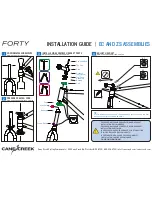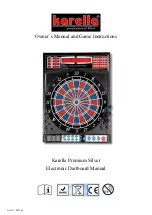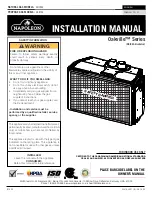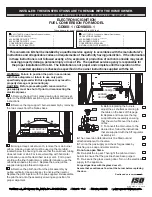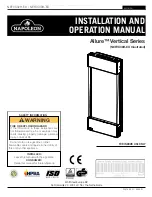
6RL SERIES OPERATION MANUAL
SECTION 3: PRODUCT OVERVIEW
Entire Contents Copyright
2018 by Adaptive Power Systems, Inc. (APS) • All Rights Reserved • No reproduction without written authorization from APS.
6RL Series Regenerative DC Load Operation Manual
Page 20 of 204
While the DC Input is switched on and constant power mode is active, the condition “CP
mode active” will be shown on the display by the abbreviation CP. It is also stored as a
status condition, which can be read as a status message via digital interface.
Note: Constant power operation impacts the internal set current value. This means that
the maximum set current may not be reachable if the set power value according to I
= P / U sets a lower current. The user defined and displayed set current value is
always the upper limit only.
3.4.4
Internal Resistance (IR) Mode
Inside electronic loads, whose operating principle is based on a variable internal resistance,
constant resistance mode (CR) is almost a natural characteristic. The load attempts to set
the internal resistance to the user defined value by determining the input current
depending on the input voltage according to Ohm’s law I
IN
= U
IN
/ R
SET
. The internal
resistance is naturally limited between almost zero and maximum (resolution of current
regulation becomes too inaccurate at high R settings). As the internal resistance cannot
have a value of zero, the lower limit is defined to an achievable minimum. This ensures that
the electronic load, at very low input voltages, can consume a high input current from the
source, up to the maximum.
While the DC input is switched on and constant resistance mode is active, the condition “CR
mode active” will be shown on the graphics display by the abbreviation CR. It is also stored
as a status condition, which can be read as a status message via digital interface.
3.5
Dynamic Characteristics and Stability Criteria
The electronic load is characterized by short rise and fall times of the current. These are
achieved by a high bandwidth of the internal current regulation circuit.
In case of testing sources with their own regulation circuits at the load, like for example
power supplies, a regulation instability may occur. This instability is caused if the complete
system (feeding source and electronic load) has too little phase and gain margin at certain
frequencies. A 180 ° phase shift at > 0dB amplification fulfils the condition for an oscillation
and results in instability. The same can occur when using sources without their own
regulation circuit (e.g. batteries), if the connection cables are highly inductive or inductive-
capacitive.
Such instability is not caused by a malfunction of the load, but by the behavior of the
complete system. An improvement of the phase and gain margin can solve this. In practice,
a capacitor can be directly connected to the DC input of the load. The value to achieve the
expected result is not defined and has to be found determined empirically.
We recommend the following capacitance range values by load model:
80 V models: 1000uF....4700uF
250 V models: 100uF...470uF
500 V models: 47uF...150uF
750 V models: 22uF...100uF
1500 V models: 4.7uF...22uF
Summary of Contents for 6RL Series
Page 203: ......



































